On an exciting weekend of Premier League action, Manchester United moved to within three points of a Champions League spot thanks to their seventh successive victory under Ole Gunnar Solskjaer coupled with Arsenal’s 2-0 win over Chelsea at the Emirates Stadium.
Elsewhere Liverpool played out a seven-goal thriller with Crystal Palace to maintain their four-point lead over Manchester City, who eased past Huddersfield Town on Sunday.
But while you know the results, here are five tactical lessons you may not have noticed from the weekend action...
Milner mishaps highlight Alexander-Arnold's importance
Virgil van Dijk has received the lion’s share of the praise for Liverpool’s greatly improved defensive record in the 2018-19 season, but Crystal Palace’s three-goal haul at Anfield suggests the emergence of Trent Alexander-Arnold was equally important.
In his absence James Milner returned to a full-back role – and was at fault for the first two Palace goals.
Liverpool’s high line, high pressing approach requires speed across the back four in order to function correctly. Pace is the one attribute Milner is missing - and it showed on Saturday.
First, he was beaten easily by Wilfried Zaha in the 34th minute as the winger squared for Andros Townsend’s opener, showing a flat-footedness and poor acceleration to make Liverpool fans yearn for Alexander-Arnold's return.
Then, in the 64th minute, Milner lunged into a tackle, leaving his flank open for Palace to counterattack into and earn the corner that led directly to James Tomkins’ equaliser.
Lunging – an act of desperation that betrays a defender's lack of pace or agility – was a big feature of Milner’s game, leading to two yellow cards that could both have been deemed straight reds.
Among all the hype surrounding Van Dijk and Joe Gomez, here was a reminder that Klopp teams demand dynamism across the back four.
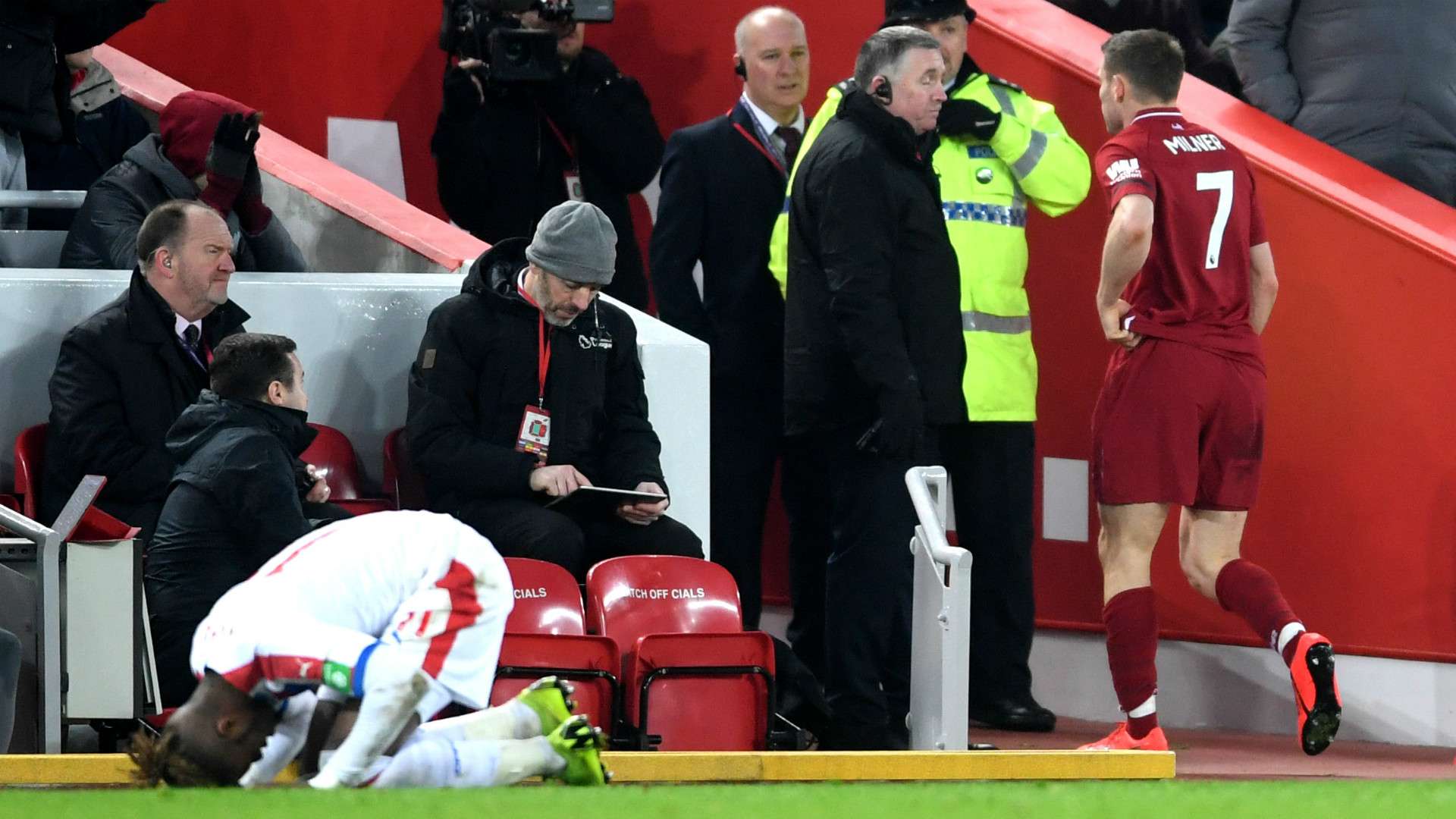 Getty Images
Getty Images
Emery's flexibility further shows up predictable Sarriball
The paralysis of the Chelsea attackers is by no means a new theme – they’ve now scored 13 goals in their last 12 Premier League games – and yet their stuttering display was made all the more stark by Arsenal’s fluency at the Emirates.
While Unai Emery perpetually changes formation and personnel, Maurizio Sarri picks the same team and the same style every week. Unsurprisingly, Emery confused his opponent while Sarri was entirely predictable.
Arsenal used a diamond 4-4-2 for the first time this season with Alexandre Lacazette and Pierre-Emerick Aubameyang both playing up-front.
Neither were expected to drop deep and create (which is handy, since neither are particularly good at it!) because Emery had four midfielders spread across the width of the pitch.
Aaron Ramsey provided the creative spark from the tip of the diamond as Lucas Torreira and Matteo Guendouzi covered the width. The sheer unexpectedness of the system put Chelsea immediately on the back foot.
The Gunners were able stunt the visitors’ passing because Jorginho couldn’t find a foothold. Ramsey sat on top of the Italy international throughout, cutting off the one passing lane Chelsea consistently rely upon.
We are all familiar with this move, of course, which is precisely the point - every manager knows how to stop Chelsea. Motivated or not, it’s a theme that will continue until Sarri starts to shake things up.
Abysmal Llorente actually aids stuttering Spurs
Harry Winks’ late goal papered over the cracks of a stuttering Tottenham performance at Fulham defined by a lack of cutting edge in the final third.
However, Mauricio Pochettino’s innovations deserve a mention, not least because they probably would have worked had Fernando Llorente not been so utterly abysmal.
Spurs nominally played a 3-4-2-1, with Dele Alli and Erik Lamela either side of Llorente, but in reality Danny Rose was so high up the pitch he can hardly be labelled a wing-back, while the outside centre-back Jan Vertonghen pushed right on, taking up the tucked-in position of a traditional left-back.
The narrow square in attack, with Christian Eriksen joining the front three, pinned Fulham into a 5-4-1 shell and, crucially, left Vertonghen in neat pockets of space to cross for Llorente.
The Spaniard’s touch was so poor, though, that eventually the Spurs centre-back stopped playing those crosses altogether – looking up, seeing Llorente free… and then changing his mind.
Two crosses did lead to the two Spurs goals, and yet neither was in keeping with Pochettino’s tactical plan.
The Argentine's instruction to both outside centre-backs to push on was interesting, but for most of the contest the visitors passed the ball aimlessly back and forth in the Fulham half, their narrowness leaving Rose and Kieran Trippier without an overlapping runner when the ball went wide.
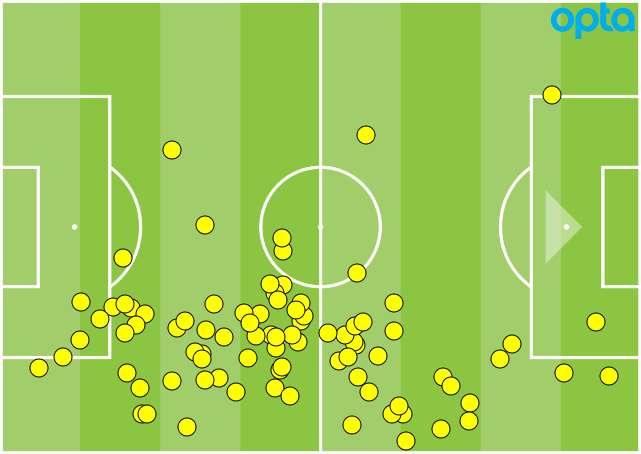
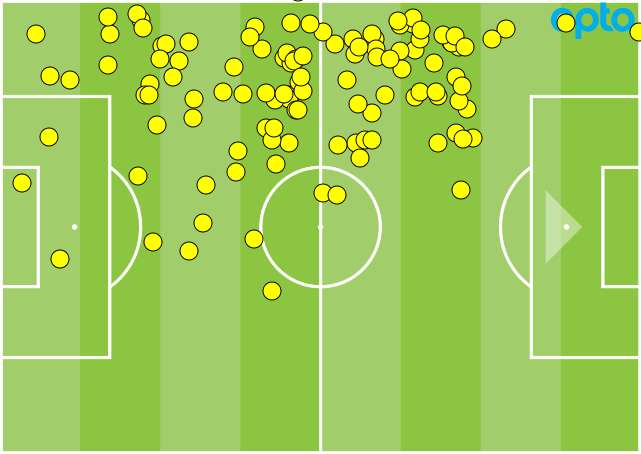
PICS: Alderweireld (top) & Vertonghen touches vs Fulham
Leicester made to pay for Neves negligence
Leicester’s central midfield is getting weaker with time. Wilfried Ndidi and Nampalys Mendy - who failed to make a single tackle or interception at Wolves - are given far too much to do alone in the middle of the park thanks to Claude Puel’s wide-open 4-2-3-1.
But that is no excuse for failing to close down Ruben Neves.
Neves loves a long diagonal; given time and space, he will cut you open. The 21-year-old played 12 long balls over the course of the 90 minutes at Molineux, directly assisting the third Wolves goal with a long pass over the defence and playing an equally impressive through-ball to pre-assist his side’s fourth.
What’s more, Wolves’ fourth minute opener came shortly after a corner earned by a long-range shot from Neves.
In all three of the above scenarios the Leicester midfield failed to get anywhere near Neves. When facing Wolves, a narrow formation - with focus on shutting down Neves - ought to be an obvious tactical instruction given by every Premier League manager.
Ward-Prowse channels his inner Scholes for the Saints
Southampton have played three at the back in most of Ralph Hasenhuttl’s games in charge, but never before has the Austrian manager played Nathan Redmond and Danny Ings together up front.
It is an unusual partnership, in that both tend to hang on the shoulder of the last defender, but one that epitomises Hasenhuttl’s gegenpressing philosophy.
Everton lost the midfield battle on Saturday thanks to the Saints’ superior numbers in the middle, with James Ward-Prowse in particular excelling as the player given licence to burst forward to join Redmond and Ings.
Rather than float in the number ten space, where his slight frame makes it difficult for him to sew things together, Ward-Prowse was able to arrive late in a move and power forward. His goal typified a Paul Scholes-like performance to build on.
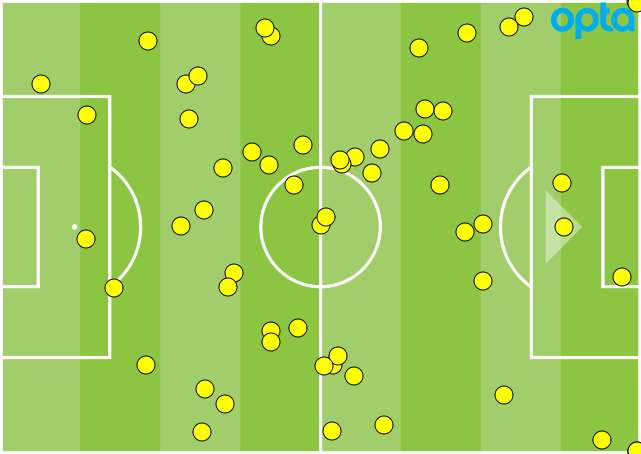 Opta
Opta
PIC: Ward-Prowse touches vs Everton
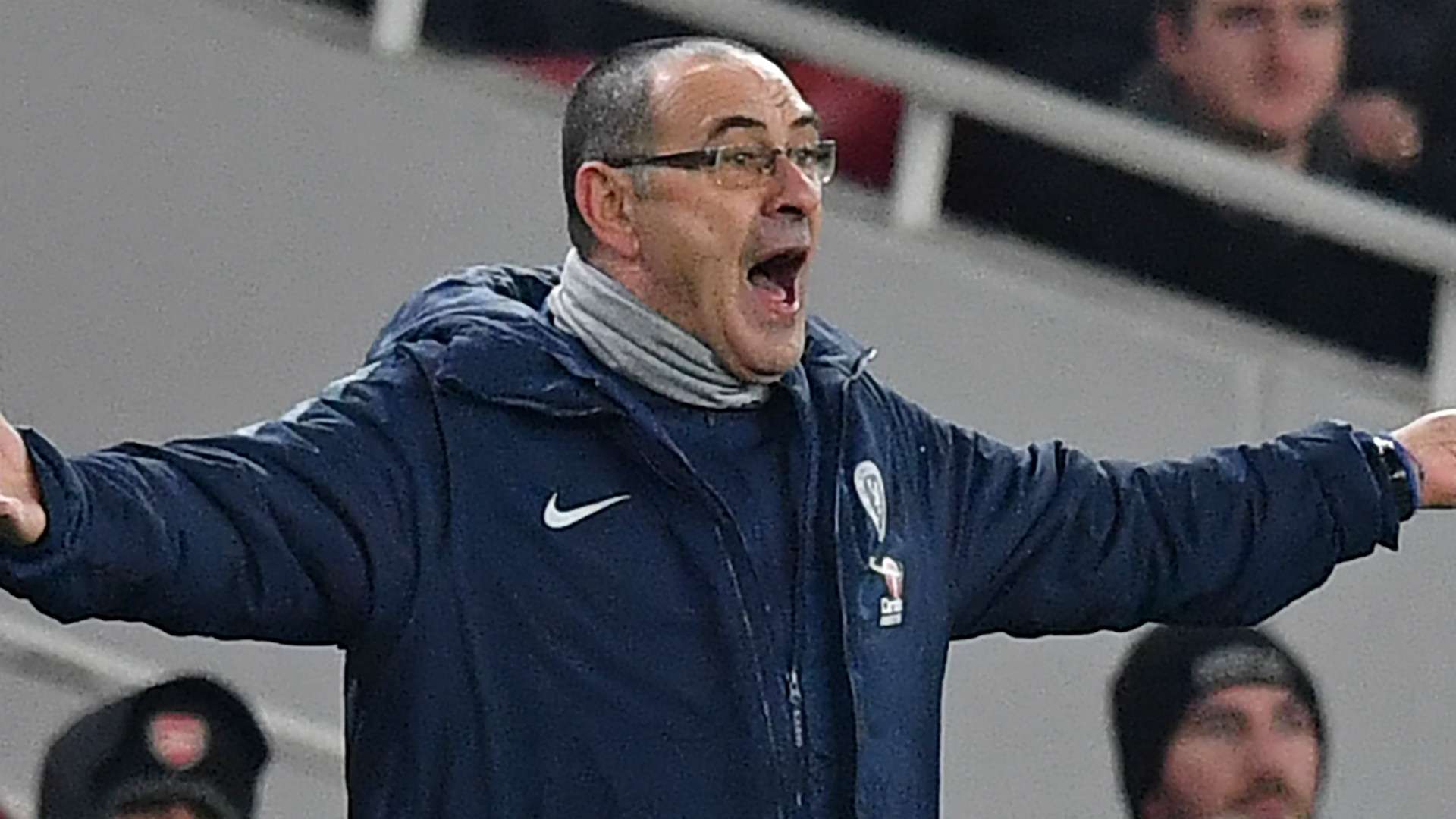






.jpg?auto=webp&format=pjpg&width=640&quality=60)
.jpg?auto=webp&format=pjpg&width=640&quality=60)